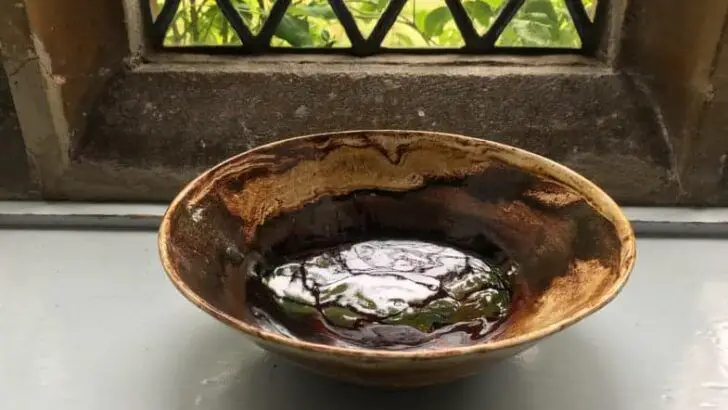Where Can I Find Clay In Dirt?
What is Clay?
Clay is a type of fine-grained natural soil material. It is composed of tiny mineral particles primarily of silica and alumina, often mixed with varying amounts of water. The small size and flat shape of clay particles give clay several distinctive properties. Here is a more in-depth look at what defines clay:
Definition of Clay: Clay consists of small crystals of various phyllosilicate minerals that typically form microscopic platy structures. The most common clays include kaolinite, montmorillonite-smectite, illite, and chlorite. The particle size of clay is less than .002 mm in diameter, which cannot be seen with the naked eye.
Composition: As mentioned above, clay’s composition is dominated by silica, alumina, and water, but small amounts of other minerals are usually present such as iron, magnesium, sodium, calcium, and potassium. The mineral content varies among different types of clay.
Properties: The tiny size and shape of clay particles give clay unique properties. Clays are plastic and moldable but harden when dried or fired. They bind tightly to water and other molecules. Clay can effectively absorb toxins, pollutants, and nutrients. Clays also provide surface area for chemical reactions and exhibit variable cation exchange capacities. Due to these special properties, clay is an extremely useful material.
Where Clay Comes From
Clay is formed from the gradual chemical weathering of rocks over long periods of time. The weathering process breaks down feldspar minerals within rocks into finer and finer grains. These super small grains are what make up clay. The chemical weathering is often aided by water erosion, freezing/thawing cycles, plant roots or bacterial/fungal action helping break down the rocks and minerals into clay.
As clay particles are weathered and transported from their source rock, they become deposited in layers. The smallest clay particles are carried farthest from their source before being deposited. This leads to sorting of particle sizes, with larger silt particles closer to the source rock and finer clay particles transported farther. These deposits and layers accumulate over time to form clay beds and seams within soil horizons. The amount and type of clay in an area depends on the local climate, native rock types, erosion patterns and geologic history.
Identifying Clay in Soil
You can identify clay in soil through some key characteristics:
Texture
Clay soil has a very fine, smooth texture. When wet, clay is sticky and can be molded into shapes that hold their form.
Plasticity
Clay is the most plastic soil type. This means it can be molded and shaped, while retaining its form once dried. Plasticity is a key indicator of high clay content.
Stickiness
Wet clay is sticky and adhesive. When squeezed in your hand, it will form a firm ball that does not crumble apart easily. The ball may stick to your palm when released.
Color
Clay soil is often red, brown, or orange in color, though dark gray and yellow clay soils also exist. The color comes from iron oxide content.
Smearing
When wet clay is smeared between your fingers, it has a smooth, silky feeling. This is due to the flat plate-like structure of clay particles.
Clay Soil Types
There are several common types of clay soils, each with their own unique properties and characteristics:
Silty Clay – Contains over 50% clay and more than 12% silt particles. It has a smooth, sticky texture when wet. Silty clay is easily compacted and slow to drain water.
Sandy Clay – Composed of 35-50% clay and at least 20% sand particles. Sandy clay holds nutrients but doesn’t hold onto water very well. It has good drainage.
Clay Loam – Consists of 20-30% clay, less than 52% sand, and 28-50% silt particles. Clay loam is loose and crumbly when dry but sticky when wet. It is often fertile soil.
Bentonite Clay – Contains at least 85% montmorillonite, which are very fine clay minerals formed by volcanic ash. Bentonite can absorb large amounts of water and expand significantly in volume. It is used for detoxification and skincare.
Kaolin Clay – Also known as “China clay,” kaolin has a high content of kaolinite clay minerals. It is usually white or off-white in color. Kaolin clay does not swell when wet and creates porous, stable soil.
Clay Distribution
Clay soils are distributed across the world, but certain regions contain more abundant deposits than others. The heaviest clay soils are generally found in tropical and subtropical zones where high rainfall has leached minerals from surface soils over time. Areas around the equator in South America, Africa, India and Southeast Asia tend to have very high clay content due to hot, wet conditions that promote mineral leaching.
Cooler temperate regions often have less clay accumulation, as lower rainfall reduces the leaching effect. However, clay deposits can still form in temperate zones along floodplains where frequent flooding brings in fine mineral particles from surrounding areas. The Midwest United States is a good example, with clay soil concentrations around major river systems like the Mississippi.
At higher latitudes near polar regions, cold temperatures and permafrost tend to limit chemical weathering and leaching, reducing clay levels in soils. But some clay still forms over time in these colder zones, especially in flatter areas where occasional flooding can deposit mineral sediments.
Overall, while clay is found across many soil types worldwide, the largest and most concentrated deposits are typically in tropical regions where heat and rainfall drive extensive mineral leaching over time.
Benefits of Clay
Clay soil provides some key benefits that make it a valuable type of soil for certain applications:
Water Retention
The small particle size and spaces between the plate-like clay particles help clay soil retain moisture very effectively. While clay has a reputation for becoming waterlogged, this ability to hold onto water is beneficial in dry climates or drought conditions. The moisture is released slowly over time, helping plants access it longer.
Nutrients
Clay particles have a negative electrical charge that attracts and holds positively charged nutrients like calcium, magnesium, and potassium. These nutrients are stored in the clay and made available to plant roots over time. The cation exchange capacity of clay is much higher than other soil types.
Workability
When the right moisture content is achieved, clay becomes very malleable and can be shaped or formed. This makes clay a popular choice for ceramics, pottery, sculptures, bricks, and other applications where form is important. The plasticity and workability of clay sets it apart from other soils.
Challenges of Clay
While clay soils provide some benefits, they also come with unique challenges that can make gardening and construction difficult. The primary issues caused by high clay content are poor drainage, compaction, and shrink/swell cycles.
Clay particles are very small and compact together tightly, leaving little space for air pockets. This results in poor drainage and waterlogging. Water has difficulty filtering through dense clay, often pooling on the surface or taking a long time to percolate down. Poor drainage leads to problems like soil saturation, runoff issues, and root rot.
The dense nature of clay also makes it prone to compaction. As clays are walked on or driven over, the particles press together even more tightly, drastically reducing the space for air and water. Compacted clay becomes incredibly hard and impenetrable by water and roots. Plants struggle to grow in overly compacted clay.
Clay soils also shrink and swell dramatically as moisture levels change. When wet, the clay absorbs water and expands. As clay dries out, it contracts and shrinks. This shrink-swell cycle can damage buildings, crack foundations, and displace plants as the ground level changes. It also creates uneven soil surfaces prone to waterlogging.
Managing water is key for dealing with clay effectively. Improving drainage, avoiding compaction, adding organic matter, and maintaining even moisture can help mitigate common clay challenges.
Improving Clay Soils
Clay soils can be challenging to work with due to their poor drainage and tendency to become compacted. However, with some amendments and practices, clay soils can be improved. Here are some methods for improving clay soils:
Adding Organic Matter
Adding organic matter such as compost, manure, leaves, or straw helps to improve the structure of clay soils. Organic matter causes clay particles to clump together into aggregates, which improves aeration and drainage. Aim to incorporate 1-3 inches of organic matter each year by topping dressing beds or working it into the soil.
Incorporating Sand
Mixing sand into clay soil creates more space between soil particles so water can drain. Incorporate a thin layer of coarse sand or composted manure and sand mix to improve drainage. Too much sand can negatively affect the soil, so only add 1-2 inches per year.
Gypsum
Gypsum is a mineral that can pull clay particles together into floccules, improving soil structure. Spread 1-2 lbs per 100 sq ft and till into soil. Gypsum works best when combined with organic matter.
Increasing Drainage
Improving drainage moves water away from clay soils. Installing French drains, adding a gentle slope to the yard, using raised garden beds, or planting in mounded rows can all help drainage. Keeping clay soils covered with mulch or vegetation helps prevent compaction from raindrops.
Uses of Clay
Clay has been used by humankind for thousands of years due to its abundance and versatile properties. Some of the main uses of clay include:
Pottery
Clay is the primary material used to make pottery items such as plates, bowls, mugs and vases. Its plasticity when wet makes it easy to shape, while its hardness when fired makes it durable for daily use. Different types of clay are suited for different types of pottery.
Bricks
Clay bricks have been used as a reliable building material for millennia. Clay is molded and fired to create strong, weather-resistant bricks to construct buildings, walls, pathways and other structures. The ingredients and manufacturing process impacts the durability and quality of the bricks.
Medicinal Uses
Various clays such as kaolin and bentonite have medicinal properties and can be used both internally and externally. Internally, edible clay can help treat diarrhea, upset stomachs, and even extract toxins. Externally, clay can be used to treat minor skin irritations, wounds, and absorb toxins.
Cosmetics
Clay masks and mud baths are popular spa and skin care treatments. The minerals in clay help cleanse, exfoliate and nourish the skin. Clay is also used as an ingredient in some soaps, cosmetics and facial powders to benefit the skin.
Finding Clay On Your Property
If you want to find clay deposits on your own property, there are a few simple steps you can take:
Test Soil Composition
Take samples from various areas of your property and do some simple composition tests. Roll a moist soil sample into a ribbon or ball. Clay soil is sticky and can be molded easily. Sandy or silty soil will crumble. You can also mix soil samples with water in a jar and let settle. Clay particles will settle to the bottom.
Look for Deposits
Search your property, especially around creek beds, embankments, and lower elevations where clay tends to accumulate. Look for areas where the soil feels very sticky when wet. Dig some test holes about 2-3 feet deep in promising areas to look for clay deposits.
Consult Soil Maps
Check online soil surveys from the USDA Natural Resources Conservation Service or your local agricultural extension office. These maps can show what types of soil dominate in your area. However, soil composition can vary greatly within a small area, so on-site testing is still recommended.


